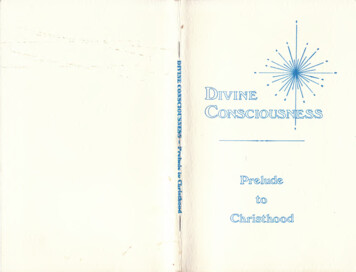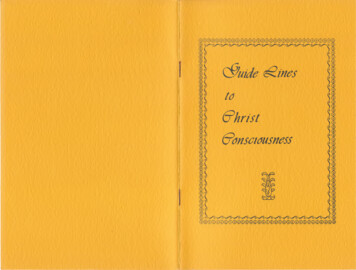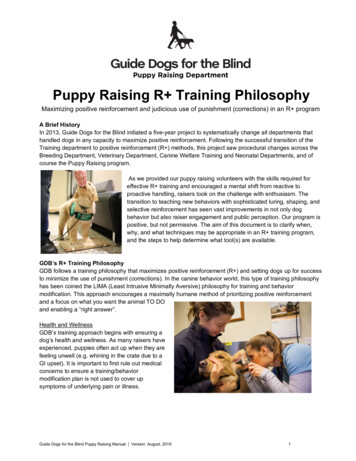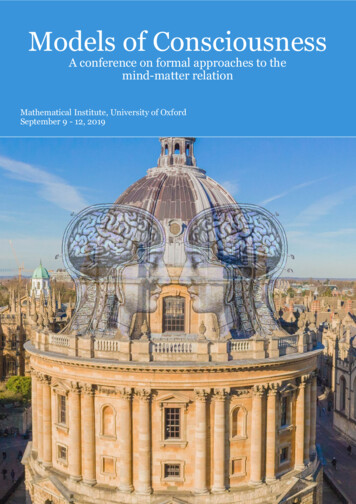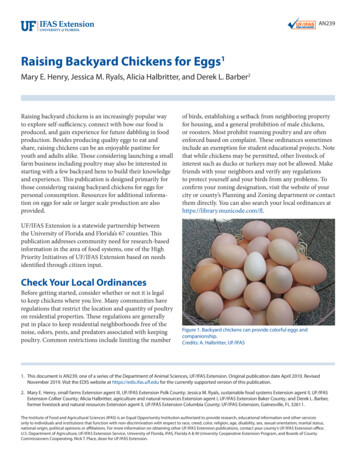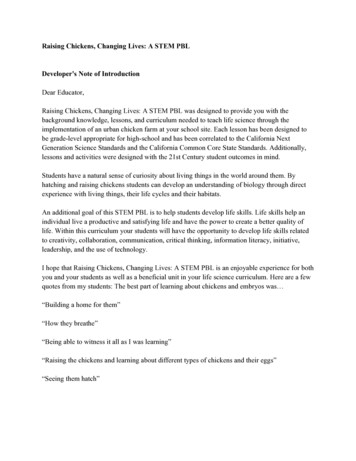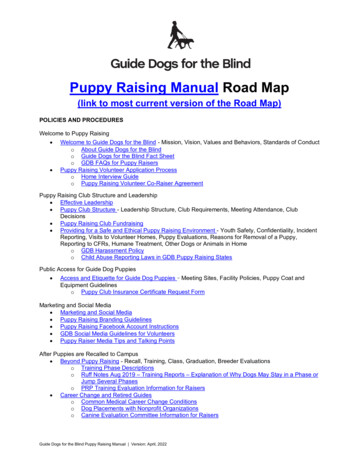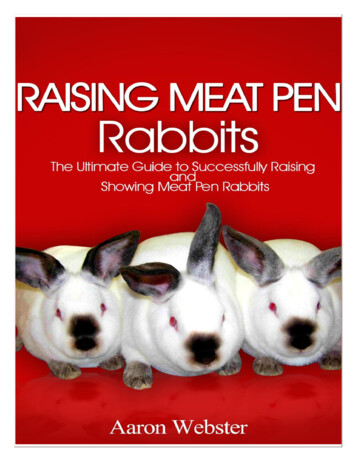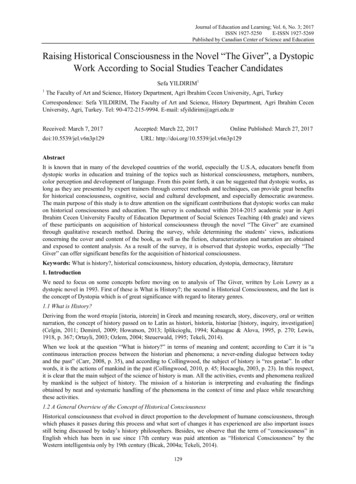
Transcription
Journal of Education and Learning; Vol. 6, No. 3; 2017ISSN 1927-5250E-ISSN 1927-5269Published by Canadian Center of Science and EducationRaising Historical Consciousness in the Novel “The Giver”, a DystopicWork According to Social Studies Teacher CandidatesSefa YILDIRIM11The Faculty of Art and Science, History Department, Agri Ibrahim Cecen University, Agri, TurkeyCorrespondence: Sefa YILDIRIM, The Faculty of Art and Science, History Department, Agri Ibrahim CecenUniversity, Agri, Turkey. Tel: 90-472-215-9994. E-mail: sfyildirim@agri.edu.trReceived: March 7, 2017doi:10.5539/jel.v6n3p129Accepted: March 22, 2017Online Published: March 27, 2017URL: http://doi.org/10.5539/jel.v6n3p129AbstractIt is known that in many of the developed countries of the world, especially the U.S.A, educators benefit fromdystopic works in education and training of the topics such as historical consciousness, metaphors, numbers,color perception and development of language. From this point forth, it can be suggested that dystopic works, aslong as they are presented by expert trainers through correct methods and techniques, can provide great benefitsfor historical consciousness, cognitive, social and cultural development, and especially democratic awareness.The main purpose of this study is to draw attention on the significant contributions that dystopic works can makeon historical consciousness and education. The survey is conducted within 2014-2015 academic year in AgriIbrahim Cecen University Faculty of Education Department of Social Sciences Teaching (4th grade) and viewsof these participants on acquisition of historical consciousness through the novel “The Giver” are examinedthrough qualitative research method. During the survey, while determining the students’ views, indicationsconcerning the cover and content of the book, as well as the fiction, characterization and narration are obtainedand exposed to content analysis. As a result of the survey, it is observed that dystopic works, especially “TheGiver” can offer significant benefits for the acquisition of historical consciousness.Keywords: What is history?, historical consciousness, history education, dystopia, democracy, literature1. IntroductionWe need to focus on some concepts before moving on to analysis of The Giver, written by Lois Lowry as adystopic novel in 1993. First of these is What is History?; the second is Historical Consciousness, and the last isthe concept of Dystopia which is of great significance with regard to literary genres.1.1 What is History?Deriving from the word στορία [istoria, istorein] in Greek and meaning research, story, discovery, oral or writtennarration, the concept of history passed on to Latin as histori, historia, historiae [history, inquiry, investigation](Celgin, 2011; Demirel, 2009; Howatson, 2013; Iplikcioglu, 1994; Kabaagac & Alova, 1995, p. 270; Lewis,1918, p. 367; Ortayli, 2003; Ozlem, 2004; Steuerwald, 1995; Tekeli, 2014).When we look at the question “What is history?” in terms of meaning and content; according to Carr it is “acontinuous interaction process between the historian and phenomena; a never-ending dialogue between todayand the past” (Carr, 2008, p. 35), and according to Collingwood, the subject of history is “res gestae”. In otherwords, it is the actions of mankind in the past (Collingwood, 2010, p. 45; Hocaoglu, 2003, p. 23). In this respect,it is clear that the main subject of the science of history is man. All the activities, events and phenomena realizedby mankind is the subject of history. The mission of a historian is interpreting and evaluating the findingsobtained by neat and systematic handling of the phenomena in the context of time and place while researchingthese activities.1.2 A General Overview of the Concept of Historical ConsciousnessHistorical consciousness that evolved in direct proportion to the development of humane consciousness, throughwhich phases it passes during this process and what sort of changes it has experienced are also important issuesstill being discussed by today’s history philosophers. Besides, we observe that the term of “consciousness” inEnglish which has been in use since 17th century was paid attention as “Historical Consciousness” by theWestern intelligentsia only by 19th century (Bicak, 2004a; Tekeli, 2014).129
jel.ccsenet.orgJournal of Education and LearningVol. 6, No. 3; 2017It is observed that significant changes take place in mankind’s historical consciousness and understandingdepending on its cultural development. Therefore, it may not be appropriate in terms of scientific logic tointerpret homo sapiens sapiens’s Historical Consciousness and understanding from a single perspective.Significant changes have taken place in historical consciousness and understanding throughout history asmankind’s perception mechanism developed and went through changes due to various social and physical causes.The age of Enlightenment in Europe, which began with Renaissance and Reform movements, made importantcontributions to historical consciousness and understanding in 18th century. From that period on, it is observedthat Positivist, Marxist, Nationalist, Romanticist, Structuralist, Existentialist, and Cyclical understandings ofHistory dominated historical consciousness. Psycho-social, socio-cultural, socio-political and socio-economicconditions of the era must have an important role in the development of these understandings of history. Theconcept of Historical Consciousness in today’s world can be explained in general sense as socialization of theindividual and, apart from this, the emergence of historical awareness thanks to the influences of lifeexperiences.As the science of history offers a psychological and socio-cultural education to the society and the individual, italso creates awareness of the facts that lie in the base of every social phenomenon and existed in the pastbecoming known through evolution. Thus, the society and individuals carry out much more precise methods ofanalysis and synthesis when they encounter problems, events and phenomena. Moreover, it is an undeniable factthat historical consciousness plays an important role in the positive progression of individual and societalidentity development, social ethics, certain values and cultural development. This is the reason why historicalconsciousness is of crucial importance in terms of protecting and even developing the value systems andphenomena that derive from societies’ historical backgrounds (Assmann, 2015; Atkinson, 1978; Bicak, 2004b;Bicak, 2004c; Block, 2015; Klein, 2005; Tekeli, 2014; Thorp, 2014).1.3 An Outlook on the Concept of DystopiaThe concept of dystopia which was used by John Stuart Mill for the first time during a parliament speech on 12March 1868 is regarded as the synonym of the word cacotopia. Used as the antonym of the word utopia, thewords anti-utopia, heterotopia or dystopia means “unfavorable, abnormal, malignant”. The word dystopia whichis derived with the negative suffix “dus”-“δυσ” (dys) in Ancient Greek is used to refer to “unfavorable place”,“unfavorable situation”, “unfavorable society”, “totalitarian governing system”, “nasty place” in many fieldssuch as politics, arts, history and literature. On the other hand, the word cacotopia, widely associated with theword dystopia, derives from Ancient Greece and was used by Jeremy Bentham for the first time around fiftyyears before Mill (1817-1818) meaning non-pleasant, ugly, tedious, bad, wrong (Bentham, 1818, p. 73; Booker,1994; Claeys, 2010; Celgin, 2011; Mill, 1868, p. 349; Mill, 1909, p. 168; Mill, 1958, p. 249; Millward, 2006;Silverman, 1997; Vieira, 2010, p. 16).1.3.1 Why a Dystopic Work and Why The Giver?It is known to everyone that dystopic works have been one of the fields in literary genres that spreads anddevelops the fastest all over the world for the last fifty years. Glancing over the literary, visual and artistic worksof especially the recent years, it is notable that dystopic works (such as films, photographs, animations, statuesand paintings) gain a gradually increasing importance within both the popular culture and the socio-political wayof thinking.Regarding most of the dystopic works today, it is seen that significant issues such as social justice,indispensability of democratic thought, universal tolerance, anti-racism, gender mainstreaming, freedom, justiceand equality are frequently handled in an apocalyptic, grotesque and emphatic style. In this respect, it would notbe wrong to remark that the works in question can contribute greatly to the individual’s socio-political andcultural development. Furthermore, when the main themes and fictions of the dystopic works are taken intoaccount, it is possible to see that along with their literary qualities, they also involve a considerable amount ofphilosophical content, which is equally important, such as culture, epistemology, ethics, law, aesthetic, pedagogy,science, ontology, politics, theology, memory, axiology, didacticism, auto-didacticism, authoritarianism,dialectics, determinism, eschatology, feminism, rationalism, anti-racism, optimism, pessimism, trans humanism,anachronism and chaos. Therefore, dystopic works need to be presented to every segment of the society andevery level of education through the correct manner, method and techniques (Brugar, 2012). We also observethat the novel The Giver which is analyzed in the scope of this study and which carries the qualities of dystopicworks has an important position among the literary genres in question and it delivers philosophically noteworthymessages.130
jel.ccsenet.orgJournal of Education and LearningVol. 6, No. 3; 2017This work was written by Lois Lowry in 1993 for young adults as a dystopic novel. The novel, after beingawarded with John Newbery Medal (the most distinguished contribution to American literature for children) in1994, was also taken on the must-read-books list in the U.S.A.The novel, translated by Esra Davutoglu as “Seçilmiş Kişi” (Lowry, 1993), consists of 23 chapters. Although ithas been over 20 years since the book was published, it is still been neatly examined by many instructors, men ofletters, and artists, and important studies on the book are still being conducted. Therefore, this work is used andregarded by the education systems of many countries as an important source for many educational activities suchas metaphor, number and color perception, and chiefly, historical consciousness (Brugar, 2012; Courtland et al.,1998; Daniels, 2002; Glenn, 2003; Grierson, 1999; Kidd, 2005; Seaton, 2008; Sumara et al., 1998; Sumara &Davis, 1999).By the way, I believe it is crucial for the objectivity of our work to note that although the novel The Giver wasawarded with important prizes shortly after its release, some families, educators, administrators in some states ofthe U.S.A applied to social and official institutions for prohibiting reading the novel in elementary, secondaryand even high schools for containing violence, ignoring the feelings of conscience and mercy, encouraging childand individual massacre, blinding parental feelings, and promoting unfavorable emotions such as suicide,euthanasia and brainwashing. Therefore, reading the novel was banned for elementary and secondary schoolstudents for a period in some states of the U.S.A with the worry of causing psycho-social traumas on children.As a result, it was on the banned books list for a period, too. On the other hand, it is obvious that it can providemultiple and significant benefits to especially elementary and secondary school students in terms of raising anddeveloping historical consciousness. However, taking into account the concerns of a part of the society andeducators, it would not be wrong to state that it is necessary to present the novel through correct method, systemand techniques to elementary school students (Alsup, 2014; Baran, 2015; Berk, 2005; Boyd & Bailey, 2009;Bucher & Manning, 2007; Burnett & Rollin, 2000; Bushman & McNerny, 2004; Davis, 2014; Enruquez, 2006;Gross, 1999; Hanson, 2009; Haviland, 2008; Hipple & Maupin, 2001; Ho, 2000; Houser, 2001; Hökkä &Eteläpelto, 2014; Hurlburt & Akhter, 2006; Jones et al., 2004; Johnson, 2007; Johnson, 2008; Kaplan, 2006;Latham, 2002; Lea, 2006; Lehman & Crook, 1998; Liang, 2002; Nikolajeva, 2009; Nikolajeva, 2014; O’sullivan,2005; Petrone, 2013; Ryan & Hermann-Wilmarth, 2013; Schoch, 2016; Sikkink, 2006; Smagorinsky et al., 2008;Teyfur & Teyfur, 2012; Thomas & Beauchamp, 2011; Town, 2012; Town, 2014; Zeece & Hayes, 2004).When examined closely, it is possible to see that dystopic works, like other literary texts, can play an importantrole in promoting the students’ cognitive and sensual abilities. In this context, dystopic works; Contribute greatly to the students’ development of historical and emotional empathy and consequentlyto the creation of a constructively critical historical consciousness. Strengthen their abilities of comprehending the events in the daily life, criticizing, reasoning andquestioning by improving their ability to think historically. Pave the way to creative thinking by influencing the students’ imagination positively. Contribute greatly to the development of cultural memory by triggering the want of discovering thepast. Affect the students’ communication and socialization abilities in a positive way along with developingthe humane and ethical values which are important for the students’ psycho-social development. Give the students the ability to note the difference between real and imaginary characters or series ofevents, if presented through the correct strategies, methods and techniques. Or else, it can cause somedisorders in the students’ ability to note the difference between imagination and real as well as inreasoning abilities. Besides, it can cause some deficiencies in students’ comprehension and perceptionof the basic traits of reasoning. Develop the students’ ability to express their emotions and thoughts more inventively in verbal orwritten form. Help the development of level of consciousness as well as making significant contributions to theindividual’s perceptual psychomotor development (Akkus, 2009; Assmann, 2015; Belenli, 2014;Demircioglu, 2014; Dilek & Alabas, 2014; Dinc, 2014; Karabag, 2014; Ozturk et al., 2012; Simsek,2014a; Simsek, 2014b).131
jel.ccsenet.orgJournal of Education and LearningVol. 6, No. 3; 20172. ObjectiveDystopic works are not used widely in historical education in Turkish education system, not differently than therest of the world. The purpose of this study is to present the ideas of social sciences teacher candidates regardingraising historical consciousness through the novel The Giver. Accordingly, the survey’s statement of the problemis as following:What are the opinions of Social Sciences teacher candidates regarding raising historical consciousnessthrough the novel The Giver?In this respect, the problem questions are as following:1) What kind of connotations does the cover of the novel The Giver make when handled with regard tohistorical consciousness?2) What kind of utopic thoughts does the novel The Giver helps to constitute?3) What kind of an impression does the novel The Giver create on you in terms of social, cultural andpolitical consciousness?4) What connotations occur to you when we associate the main themes of the novel The Giver withevents in the history?5) What thoughts do the main characters of the novel The Giver help to form?6) What are your opinions regarding the narrations in the novel The Giver?7) What are your opinions regarding teaching the novel The Giver at schools?3. Method3.1 Research ModelIn this study, case study model, one of qualitative research approaches, is used to examine students’ views on thenovel The Giver from different perspectives. Case study is a research method which offers the opportunity to studya contemporary phenomenon in the frame of real life and is used when more than one evidence or data source isavailable, and in which the boundaries between the phenomena and the context are not precisely determined (Yin,2009). Case study allows the factors related to the case (environment, individuals, events, processes, etc.) to beexplored with an integrated approach. Besides, case studies focus on in what ways it affects and is affected by thespecific case (Yildirim & Simsek, 2013). Therefore, the study is based on case study model.3.2 Population and SampleThe population of this study consists of fourth grade university students studying social sciences in bachelor’sdegree. The sample of the study consists of the students who study in Agri Ibrahim Cecen University Faculty ofEducation Department of Social Sciences Teaching 4th grade during the fall semester of 2014-2015 academic year.During the survey, purposeful sample selection method is used and a total of 130 students ranging in age from 21to 24 participated in the study. Purposeful sampling allows the issues that are considered rich in information to bestudied profundly. The main understanding in purposeful sampling is allowing to designate a sampling group thatmeets a series of predetermined criterion (Patton, 2014; Yildirim & Simsek, 2013). This is the reason whypurposeful sampling method is used in this survey.3.3 Research ProcessThis survey is completed in 14 weeks including the fall semester of 2014-2015 academic year. The details of thesurvey process are presented in as in Table 1.Table 1. Research processWeeksExplanationWeek 1Determining teacher candidates and preparing the outline for the research process.Week 2Clarifying the the concepts related to the subject of the survey and informing teacher candidates about theresearch process.Week 3Generally introducing the novel that takes part in the research process.Week 4Making the samples read chapters of 1, 2, and 3 of the novel and conducting summarizing studies on related132
jel.ccsenet.orgJournal of Education and LearningVol. 6, No. 3; 2017chapters.Week 5Making the samples read chapters 4, 5, and 6 of the novel and conducting summarizing studies on relatedchapters.Week 6Making the samples read chapters 7, 8, and 9 of the novel and conducting summarizing studies on relatedchapters.Week 7Making the samples read chapters 10, 11, 12, and 13 of the novel and conducting summarizing studies onrelated chapters.Week 8Making the samples read chapters 14, 15, 16, and 17 of the novel and conducting summarizing studies onrelated chapters.Week 9Making the samples read chapters 18, 19, 20, and 21 of the novel and conducting summarizing studies onrelated chapters.Week 10Making the samples read chapters 22 and 23 of the novel and conducting summarizing studies on relatedchapters, as well as preparing data collection tool.Week 11Data collection.Week 12Data analysis.Week 13Data analysis.Week 14Interpretation of the results and writing the survey report.3.4 Data Collection Tool and Data CollectionThe data of the survey are obtained through a questionnnarie that consists of seven open-ended questions anddeveloped by the surveyor. The questionnaire is prepared in accordance with the views of two history educationspecialists, one educational administration specialist and one program development specialist. The questions areedited according to the feedbacks received and understandability of these questions are tested through a pilotscheme with 10 teacher candidates that are also on fourth grade but not included in the main practice. Lastly, thequestions on the questionnaire are visually organized and the data collection tool is made complete. During thedata collection process, with the purpose of reflecting the views of the participants, indicator marks like “px” areappointed for those who are quoted. The data collection process lasted approximately an hour.3.4.1 Data AnalysisThe date obtained through the data collection tool are analyzed using the content analysis method. The mainassumption of content analysis is to obtain concepts and relations related to the data that has been acquired(Yildirim & Simsek, 2013, p. 259). The data obtained within this context were firstly digitisized and presentedwith frequencies in a descriptive way, and then examined profoundly. Moreover, while presenting the findings, theacquired results are supported by providing direct quotations from the answers of teacher candidates.3.4.2 Validity and CredibilityThe data obtained from the questionnaire were passed on to two people who are expert on the fields of history andeducation. The records of the two experts’ meeting were transcripted; codes and categories were achieved throughNvivo software. In order to ensure the credibility of the survey, the data were revised by two researchers centageofConciliation) [Na(Consensus)/Na(Consensus Nd(Dissidence)] X 100 formula (Miles & Huberman, 2015, p. 278). At the end of thiscalculation, value P 78% was attained and the survey was proved to be credible. Lastly, the data is categorizedaccording to research questions and presented with tables.4. FindingsAccording to the findings attained through the content analysis, categories and codes related to the views ofteacher candidates are visualized with tables and presented according to each research question.133
jel.ccsenet.orgJournal of Education and LearningVol. 6, No. 3; 20174.1 Findings Regarding the Evaluation of the Novel’s Cover in Terms of Historical ConsciousnessTable 2 shows the categories and codes related to the connotations that occur evaluating the novel’s cover in termsof historical consciousness:Table 2. Categories and codes related to the connotations that occur evaluating the novel’s cover in terms ofhistorical consciousnessCategoryCoherence of the novel’s coverwith the contentPedegogical suitability of thenovel’s coverCodesf%By connoting wisdom and pessimism, the cover of the book reflects the content.5139The cover of the novel does not reflect the utopic society given in the content.3527The main character on the novel’s cover reflects the philosophers.1814There is not enough details that can draw the reader’s attention.119The novel’s cover is not pedagogically interesting for children.86The novel’s cover is interesting for the reader.75130100.0TotalWhen the students’ views were divided into cades and categories concerning the cover of the novel, two maincategories were manifested-coherence with the content and pedagogic suitability.4.1.1 Coherence of the Novel’s Cover with ContentAmong the views concerning the coherence of the novel’s cover with content are that it connotes of wisdom andpessimism (39%), that it does not appeal to students’ imagination, it is not interesting and therefore it does notreflect the utopic society given in the content (27%), but that the main character can reflect the philosophers (14%).Besides, participants asserted that design elements are appropriate for the framework of idealism and the visualelements are plain and harmonious.In accordance with these data, it is observed that most of the participants assert that the cover and the content arecoherent.A number of participants’ views on this subject are as following:“The cover of the novel is coherent with the content in terms of wisdom and pessimism.” (P5)“The cover of the novel reflects a novel content that focuses on ideas by evoking a philosopher’s image. A depthperception is created by the leafless trees at bottom left corner of the philosopher’s image, and thus thoughts thatrelate to idealism are evoked. Besides, it is coherent with the novel in terms of colour and plainness.” (P6)“There are no eye-catching details.” (P37)“The novel’s cover and content are not coherent. While a child’s story is told in the content, there is an old man onthe cover.” (P16)4.1.2 Pedagogical Suitability of the Novel’s CoverAnother characteristic of the novel’s cover is that it is interesting for the participants (5%). A number ofparticipants’ views on this subject are as following:“The portrait of the old man on the novel’s cover actually conveys very profound meanings. So if we handle thisnovel as an educative work, we know that the narrations of sages have a significant place in the basis of education.Therefore, the portrait on the cover is suitable for children’s education for symbolizing wisdom.” (P120)Nevertheless, some of the participants expressed contrasting opinions as well. In this respect, the view that thereare not enough details on the content of the cover to draw attention is overweighs (9%). A number of participants’views on this subject are as following:“The black color of the novel’s cover leaves a gloomy effect at the first glance. The dreary atmosphere on the oldman’s face on the cover leaves a negative influence on the individual’s psychology.” (P26)Furthermore, other highlighted points include that the novel’s cover is not pedagogically appropriate forelementary school students, that it can be enriched by more visual elements and can be designed in a moreunderstandable way for students (6%). A number of participants’ views on this subject are as following:134
jel.ccsenet.orgJournal of Education and LearningVol. 6, No. 3; 2017“The cover of the novel is not appropriate for elementary school students. It could have been colorful. It is difficultfor the children to understand the picture on the cover because it has profound meanings.” (P1)“The cover is suitable for the issues that the novel contains. However, it is not interesting for the level ofelementary school students.” (P125)4.2 Findings Regarding the Utopic Thoughts Aroused by the NovelBelow, Table 3 shows the categories and codes related to the utopic thoughts aroused by the novel. In this context,the codes attained by the views of participants were evaluated in two main categories-positive views and negativeviews.Table 3. Categories and codes related to the utopic thoughts aroused by the novelCategoryViews related to negative reflections ofthe utopic thoughts aroused by the novelViews related to positive reflections of theutopic thoughts aroused by the novelCodesf%A societal model that should never exist is depicted.4232This novel refers to a dystopic society.118It reminds of an emotionless, thoughtless and robotizing society.97The novel reflects an ironic viewpoint to the societies that has amonotonous lifestyle in today’s world.65It mentions a society where the old and the weak children do nothave a chance to live.43The novel talks about a new socialist, communist and atheist world.21The novel depicts a perfect world.2822The novel argues that an idealistic society should not be broughtinto being.1512It creates emotions similar to Al-Farabi’s utopia “On The PerfectState” and Plato’s utopia “The Republic”.75It depicts an orderly and problem-free world.65130100.0TotalWhen the students’ views were divided into codes and categories concerning the content of the novel, negative andpositive views were identified.4.2.1 Views Related to Negative Reflections of the Utopic Thoughts Aroused by the NovelDepiction of a world that should never exist (32%) and constant mentioning of a dystopic society (8%) stand outamong the negative views as the codes with highest frequency. Moreover, a significant number of the participantsstated that the novel’s content reminds of a society that is bereft of emotions and producing thoughts and robotized(7%), while at the same time ironically reflecting the societies with monotonous lifestyles looking at today’s worldcritically (5%), among other interesting points of views.The participants’ views on this subject are as following:“It refers to a society which looks good in theory but whose consequences cannot be indigenized.” (P5)“It depicts a world where misdeeds are completely prevented through prohibitions.” (P38)“The novel tells an imaginary and orderly society which would not be possible in today’s world.” (P29)“It talks about a society where a robotized, standardized human model is attempted to actualize.” (P50)“The novel presents despotism in that all the rules and frames depend on the rules and conditions to be uttered bya few old people. How sound a satisfaction can it give to live in a world where the feelings of maternity andpaternity are exploited and not appreciated, and humans are robotized?” (P67)“The novel reminds of the experiments in the Nazi world and their dream of creating the utopic race.” (P16)In the light of these findings, it is seen that an important part of the participants stated a view in the same directionthat the novel depicts a society model that should never really exist.135
jel.ccsenet.orgJournal of Education and LearningVol. 6, No. 3; 20174.2.2 Views Related to Positive Reflections Regarding the Novel’s ContentAmong the positive views, the most notable entries are that the novel depicts a perfect world (22%) and thenovel asserts an idealistic society should not be created (12%). Along with these views, other interesting pointsare the mention of an orderly and problem-free world (5%), and references to Al-Farabi’s “On the Perfect State”and Plato’s “The Republic” (5%).A number of participants’ views on this subject are as following:“A society that is perfect in every respect is desired to create. Education and the system are formed accordingly.”(P27)“The novel shows similarities to Al-Farabi’s utopia ‘On the Perfect State’.” (P26)“The novel points put emphasis on a perfectionist world, like in Maslow’s theory of self-actualization.” (P47)“The novel stresses a Governmental Utopia.” (P46)“It talks about a perfect world. A world where everything is perfect and there is no war, no pain and no fear isenvisioned.” (P69)“The novel refers to a scholastic utopia.” (P77)4.3 Findings Regarding the Reflections of the Novel in Terms of Social, Cultural and Political ConsciousnessBelow, Table 4 shows the categories and codes related to social, cultural and political consciousness arou
Giver" can offer significant benefits for the acquisition of historical consciousness. Keywords: What is history?, historical consciousness, history education, dystopia, democracy, literature 1. Introduction We need to focus on some concepts before moving on to analysis of The Giver, written by Lois Lowry as a dystopic novel in 1993.


